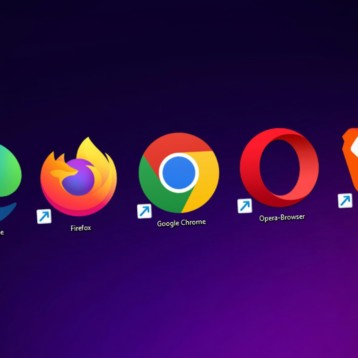
As technology continues to flourish over the years, it is no doubt that endless knowledge and curiosity should keep up with the pace. New technological inventions and innovations are serving humanity with information that they need for day-to-day activities.
Whenever an individual needs answers to their questions, among their most reliable sources, is the World Wide Web (WWW). When the internet was still before its prime, people have always resorted to various forms of written resources. Today, one click on your device can take you to a library of jam-packed information.
As a content creator of the World Wide Web, it is your utmost responsibility to post and create only relevant, factual, and helpful information to present on your audience. With this in mind, academic research will establish the foundation of your content.
What Is Academic Research?
Academic research is a knowledgeable pursuit of finding answers to specific phenomena, which aims to understand, describe, and predict based on accurate results. Academic research is not all about collecting past studies, stitching them as your own, and publishing them. There is an appropriate process to follow when conducting academic research, and copying someone else’s work is not one of them.
There are various specializations in academic research: basic research, clinical research, and population-based research, three of which are prevalently utilized by researchers. No matter their differences, they meet on the same pedestal: evidence-based research. One can’t claim and conclude their work without gathering enough facts and knowledge to support their arguments. If there are no proofs and evidence, then people aren’t willing to listen without considering that your claims might be valid.
Academic research is a broad subject. If you’d like to learn more about academic research, then this blog post explains what is academic research, what it looks like in practice and more important points that need emphasis. Although writing academically is a massive obstacle, you’ll thank yourself later after incorporating it into your content.
What Does Academic Research Have To Do With My Content?

When integrating academic research into content creation, many content creators might get confused. At first glance, academic research seems like a professional work performed by field experts, such as scientists and researchers. As many aren’t aware, conducting academic research can enhance and diversify perspectives in your website content.
Since academic research revolves around evidence, integrating them into your content creates validity and reliability on your overall website. These pieces of evidence include statistics, testimonials, case reports and studies, controlled trials, and many more. Through connecting and associating them logically to the theme of your content, you can encourage more readers to trust your future posts.
Brand creation and marketing itself won’t exist without academic research. It is an essential element in business startups and the succeeding operations of businesses. Starting from setting your goals and defining your path, up to gathering customer feedback, research is a necessary tool. Now, can you still say, as a content and product creator, that academic research are only for the academic experts?
Conducting Academic Research For My Content
Writing and creating content is an intricate, complex process. Now that you have understood the relevance and importance of incorporating academic research into your content, you should be able to write one.
When writing academic research for your content, take note that you’re not supposed to be perfect and not make mistakes, particularly if you’re still starting in this type of writing. As you learn continuously, you’ll eventually get the hang of conducting academic research through experience and more research.
To shed more light on this matter below is an in-depth yet simple guide in conducting academic research for writing content on your website:
Stay Away From Procrastination
Right before going into the actual steps of researching, take note to start your work at the earliest opportunity, and don’t procrastinate. You might have gone through procrastination at some point in your life, and its outcomes were probably never pleasing. Writing content for your website is a professional and knowledgeable endeavor that requires you a considerable amount of time.
Probably the most time-consuming step in conducting your academic research is reading scholarly sources after compiling them. First, you have to read all these sources and see if relevant information on your topic needs to be incorporated into your work. You won’t be able to identify these details without going through them in-depth.
Establishing Your Content Idea
Before writing anything, the most crucial piece to establish in your research is the main idea to put into your content. Evidently, a content’s central idea will vary from website to website, depending on what the site talks about. For instance, if you write about beauty and wellness, then your idea should be concerned with everything beauty-related.
Establishing your content’s main idea already gives your audience a clue about what you’re going to talk about throughout the content. In this way, the reader can assess if they’re going to continue reading or not. In a study conducted by the Nielsen Norman Group, 79% of users scanned a web page they come across, and 16% only read the content word-per-word.
Therefore, when establishing your overall content’s theme, make sure that you’re concise and straightforward. As much as possible, the title should mention its content’s glimpse.
Introduce Your Content And Its Background
Once you have set the central idea of your work, the introduction is necessary. Like in research papers, the first chapter always starts with the introduction, together with the following parts:
- Background of the study
- Significance of the study
- Statement of the Problem
- Goals and objectives
- Scope and delimitations
Although you don’t need to strictly follow this format, having a structure of your content allows you to explain your thoughts and ideas in a more logical manner. To revise this research paper version into a more website-friendly structure, here are some questions that you can ask yourself while writing the introduction and address them on your content:
- Why did I come up with this topic or idea?
- How is this content relevant to my audience?
- Who will most benefit from my content?
- Is there any significance to my topic in current events?
- What are the salient points I aim to address in my entire content?
- What goals and objectives should I tick off at the end?
- What does my content cover, and what does it not?
Know Where To Look For Resources
Finding the right resources online can significantly support your content, but you should know where to find them. Not all sources, both written and online, are always reliable and credible. So, where do you seek reliable sources amidst the sea of mixed valid and fake content?
Google Search is among the most popular search engines on the World Wide Web. You can start with a vague keyword search and see if you find something. To be more specific, change your keywords into a phrase or sentence which narrows down what you’re trying to find. However, the top results in Google Search aren’t always the best or most legitimate, especially Wikipedia.
Speaking of Wikipedia, try to stay away from information websites that can be edited by any user because anyone can alter the content’s validity. Instead, use Google Scholar to search for journals, books, and magazines.
Another helpful tip for finding your resources is to follow the trail of citations and references in a specific work you’re reading. You can do a quick scanning to see if the original paper has really mentioned the information or whether it was only fabricated.
When finding sources from different platforms and websites, an excellent way to demonstrate content variety is changing your type of reference from time to time. For example, don’t stick to journal articles all throughout your content, because it will look less dimensional and redundant for the readers.
Take Note Of Proper Citation
Since you’re utilizing information in your content that didn’t directly come from you, proper citation and credit are vital to honoring the original author of the work. Thus, make use of appropriate citations in every mentioned source and strictly follow citation guidelines.
You can cite sources properly on your work through in-text citations. In-text citations refer to those referencing that is on your content, so it doesn’t include the list of sources at the end. There are two ways to use in-text citations:
- Numerical: Using a number that corresponds to a unique source at a footnote or reference list at the end. Citation guides that use this type of citation are Chicago notes and bibliography, IEEE, and other lesser-known style guides such as OSCOLA and Vancouver.
- Parenthetical: This is a direct citation at the end of a sentence of the paragraph, which includes the authors’ surnames and year of publication. APA, MLA, and Chicago author-date style guides usually use parenthetical citations.
Citing your sources appropriately doesn’t give the author credit only, but it also sets you on the edge of content writing. Using proper citations mean that you can write competitive content and not just for the sake of advertising or gaining popularity.
Integrate Sources Seamlessly
Another challenge that comes with utilizing sources for your academic research is how to blend these pieces of information seamlessly and on your own way as the content creator. Copying and pasting the information, then citing your source is not advisable. This is not how it should work. You only have to borrow the idea and cite the sources correctly, but stitch it into your content on how it naturally fits in.
For a better and more seamless integration of your sources, here are three ways to do it:
- Summarizing: Through summarizing your sources into your work, you’re only emphasizing the essential details or the summary of what point you’re trying to highlight. If you only want to present the main idea from the source that you need for your content, summarizing is your best option.
- Paraphrasing: You can paraphrase your sources by rewording them; thus, your paraphrased text can be as long as the original one. Paraphrasing is ideal when you have a better way of explaining the idea than the original author.
- Quoting: Lastly, quoting is simply done by copying the whole text and enclosing them in quotation marks (” “). Details that need quoting are specific, technical, and entirely important information written by the author.
Create and Conduct Your Research Design
To facilitate an efficient and logical way of explaining the critical points of your content, integrating past studies aren’t enough to prove your claims. You will need a more substantial methodology for making sense of your content by constructing a research design and performing it in your study.
Research design is an elaborate framework consisting of your own methods and techniques to approach your research problems. Your research design can precisely describe what type of research you’re conducting, whether a survey, experimental, semi-experimental, correlational, review or more.
Before proceeding with your methodology, you must first have a grasp of different research designs to choose which one will provide the most efficient results for your study. Generally, there are two main categories of research design:
- Quantitative: As the name suggests, quantitative research uses numbers and statistics to gather necessary data for your study. If your content is easy to comprehend only through numbers, then utilizing a quantitative design is your safest bet.
- Qualitative: On the contrary, qualitative research requires a more profound inquisition of knowledge, including insights and personal experience from respondents. Researchers typically use theories to solve a phenomenon and sometimes supported with numerical data.
These details only explain the fundamentals of dealing with research design. If you think your content needs a more intricate research methodology, read more here.
Discuss Your Results Relative To Your Main Idea
After gathering your results, now comes the challenge of interpreting and discussing them into your readers in a comprehensive yet concise manner. The use of visual cues will assist your readers in understanding the results of your research, such as utilizing illustrations and charts. Keep in mind that discussing your results should be summarizing all information from your methods and findings, and relate these results to the salient points of your research.
When discussing this part of your content, here some things to take note of:
- Don’t just discuss the content of the results, because you’re simply repeating what is indicated on your illustration or table. Interpret the result and state how it affects your study.
- Don’t summarize the whole methodology of collecting results in this part. Focus only on the results.
- Describe and interpret the findings, but don’t make any implications and speculations yet.
Conclude Your Research
Last but not least, when you were told not to establish implications on the previous part of your work, it is because it belongs to the conclusion part of your research. Remember when you make a conclusion to an essay, and it is almost the same in making one on an academic paper.
The conclusion of your academic research should be able to:
- Summarize essential points mentioned in your entire content, especially if you’re trying to seek solutions to existing problems.
- Write your claims or statements and specific methods you dealt with to obtain desired results
- Mention the results again, but briefly, along with their short interpretations
- Lastly, state the conclusion of your research and its implications and relevance to the field that you’re working on
Takeaways
Writing academic research itself is exhausting and time-consuming, especially in the academic setting. When writing on your website and incorporating academic work, you may or may not have a better maneuver of how to present yourself and your topic to your varying audience, that is why strong research skills are crucial in writing academically. With the help of these simple tips discussed in this article, hopefully, you can conduct your own academic research that will fit well into your website’s content.







![10 Top Game Sites Not Blocked By School [2024 Updated]](https://thefutureofthings.com/wp-content/uploads/2024/10/image-25-358x358.png)


